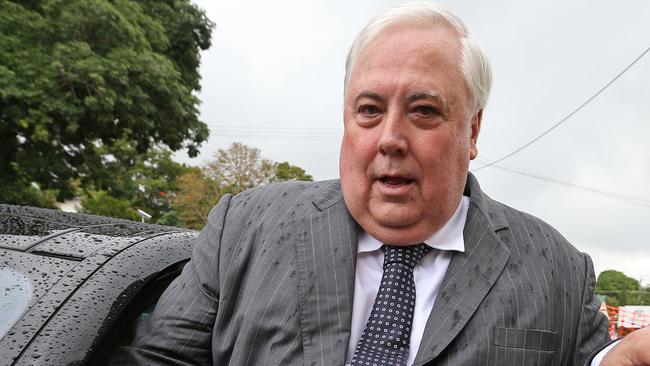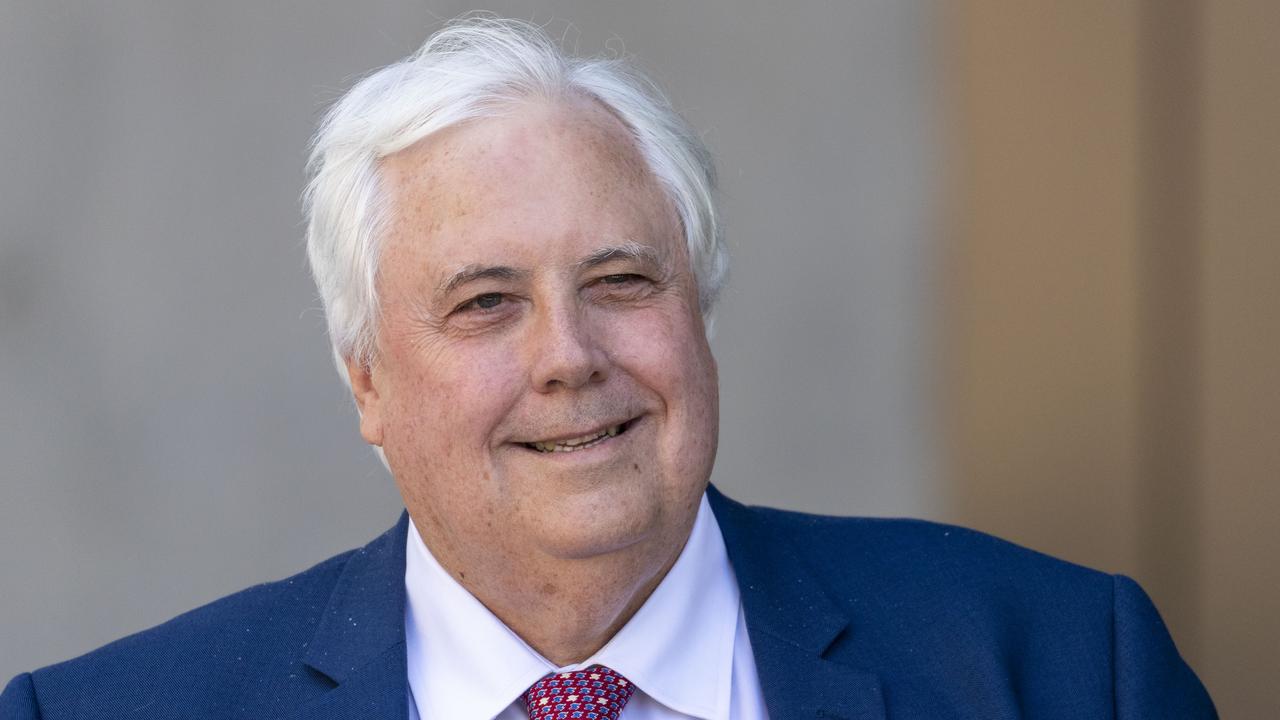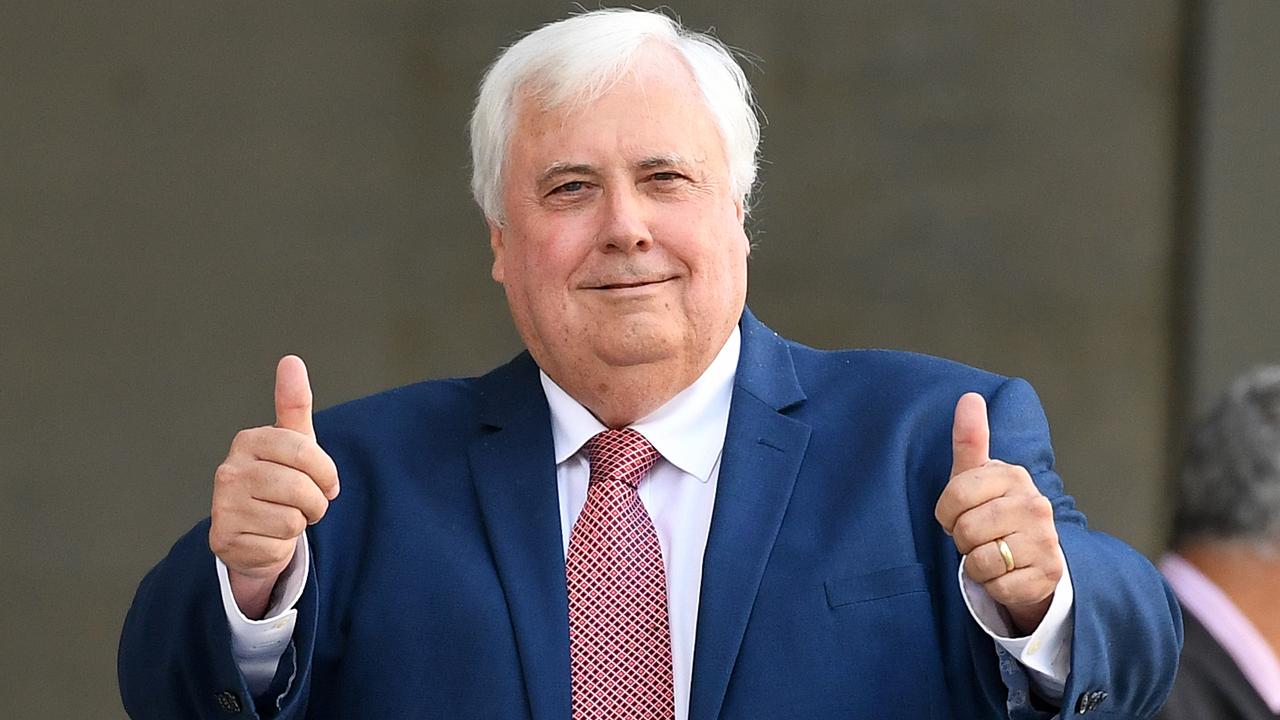Clive Palmer faces ‘$1.4bn clean-up’ for nickel refinery
The cost of rehabilitating the toxic land and ponds of Clive Palmer’s nickel refinery has been estimated at $1.4bn.

The cost of shutting down and rehabilitating the toxic land and ponds of Clive Palmer’s strife-torn nickel refinery was estimated by its previous owner BHP Billiton at $1.4 billion.
Internal BHP documents obtained by The Weekend Australian yesterday show that in the months before the global miner offloaded the refinery to Mr Palmer for free in mid-2009, staff tallied the costs of shutdown, sackings, demolition and clean-up. The total figure came to $1.415bn and included “backfill of pits and rehabilitation of mine area, remediate contaminated soil/groundwater, rehabilitate dams and evaporation cells”.
In subsequent internal reviews, the cost estimates were cut and shared with prospective purchasers including Mr Palmer, who initially benefited from a rising nickel price, which has since collapsed.
The documents highlight the potentially huge cost to taxpayers in cleaning up Mr Palmer’s site if insolvency experts determine it should be closed, with the remaining 550 workers laid off.
A creditors’ meeting in Townsville yesterday was told that a cash injection of “tens of millions of dollars” would be needed to prevent the refinery from collapsing into liquidation as soon as April 30.
The meeting heard Queensland taxpayers would be left with an unprecedented environmental clean-up bill while the federal government would have to pay at least $30 million in workers’ entitlements while major creditors would go unpaid.
More than 200 sacked workers were told the refinery’s debt was “north of $100m”, with more than 1500 creditors. The meeting was told investigations were continuing into more than $20m in political donations by the refinery to the tycoon’s Palmer United Party.
In its internal 2009 review for a division of BHP Billiton, the company identified the known environmental risks. The review asked several fundamental questions, including: “How many years until groundwater is acceptable? What is acceptable groundwater quality?”
The review warned: “Groundwater is already high in ammonia. Post-closure activities could go well beyond 2021.”
The BHP Billiton review of the pollution of the refinery, at Yabulu near Townsville on the edge of the Great Barrier Reef Marine Park, flagged costly work to deal with hazardous materials in the tailings ponds and in the soil, including asbestos and radiation sources.
The refinery was branded by BHP Billiton executives in 2009 as unviable at the prevailing nickel price and out of step with the company’s plans.
“The refinery was either going to be sold or closed and when Clive came along to buy it, the view at BHP was that we had to make sure he was on the hook and that he was able to take it on and keep it going,’’ a BHP Billiton executive involved at the time said yesterday.
“That is why BHP effectively gave it away to him. It was a net liability to us at the time.”
Mr Palmer, who has spent most of his $US415m windfall from a Chinese investment in iron ore tenements on non-performing assets, now lacks the means to run the refinery or fund its environmental clean-up.
BHP Billiton, concerned about the cost of fixing the environmental legacy and the impact on the local economy from a sudden closure, got a guarantee from Mr Palmer in 2009 that he would not strip cash from the refinery for three years.
The sale agreement, which has been obtained by The Weekend Australian, states that Mr Palmer and his companies agreed that for three years after the 2009 sale, the refinery would not pay “any dividend ... permit or facilitate any return of capital, capital reduction, share buyback or any other form of distribution ... provide any financial benefit to a buyer or (Mr Palmer) or to any person or entity associated with a buyer or (Mr Palmer)”.
However, Mr Palmer soon used the refinery’s cash to buy the Hyatt Coolum resort and golf courses. He subsequently transferred the assets to a separate and unrelated company. To avoid breaching the conditions in the sale agreement, these leisure assets, which were also losing money, were bought by Queensland Nickel companies — and Mr Palmer told the staff the business was “diversifying” by picking up distressed properties at bargain-basement, post-global financial crisis prices.
The refinery’s environmental risks are a major concern for the Queensland government and the Townsville community. The state’s environmental regulator is prosecuting Mr Palmer’s company over spills of toxic sludge from its tailings dams. The Australian revealed two months ago that in his latest company accounts, Mr Palmer cut $275m from his balance sheet for environmental restoration of the polluted site.
The refinery poses a serious environmental threat, with nitrogen concentrations in its ponds more than 150 times the maximum for sewage discharge in the marine park, according to a 2014 federal government document disclosed under Freedom of Information laws. The threat of another major discharge from the refinery’s ponds to the ecosystem of Halifax Bay in the World Heritage Area was described as “similar to the daily discharge of treated sewage from a city of seven million people”.
Regulatory action stalled after Mr Palmer threatened a compensation claim of $6.4bn “should the Great Barrier Reef Marine Park Authority intend to exert authority over the company’s operations”.





